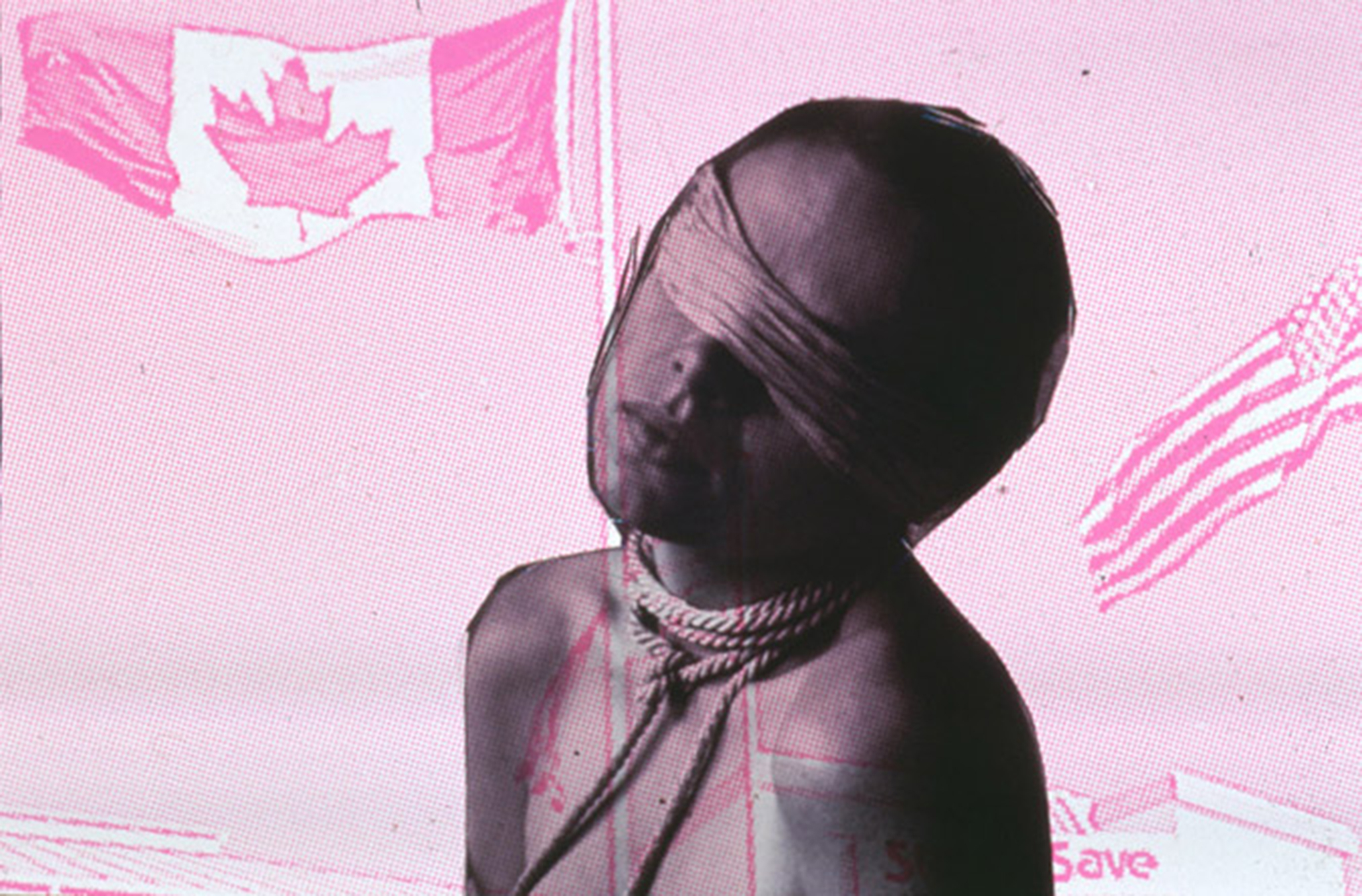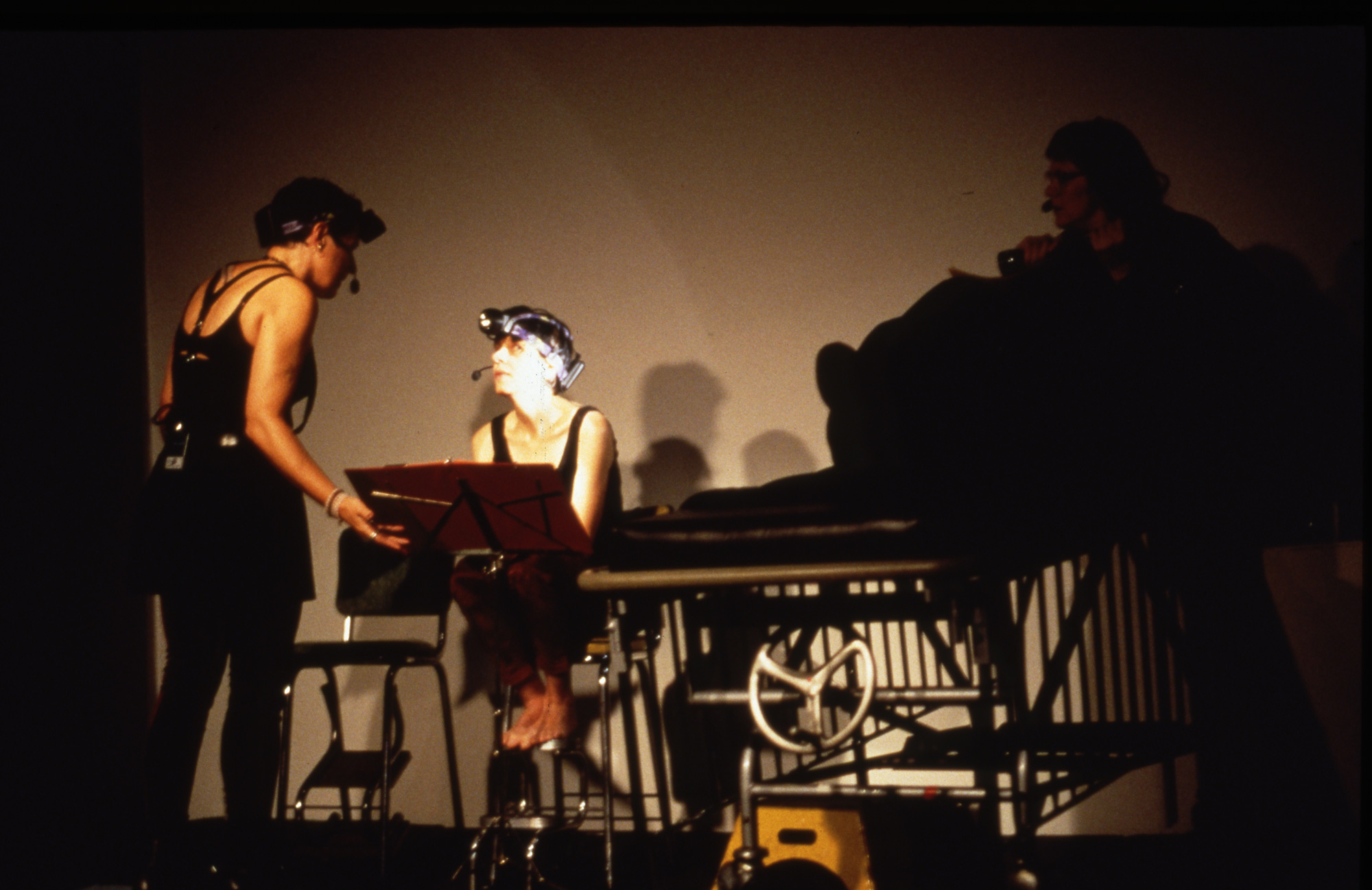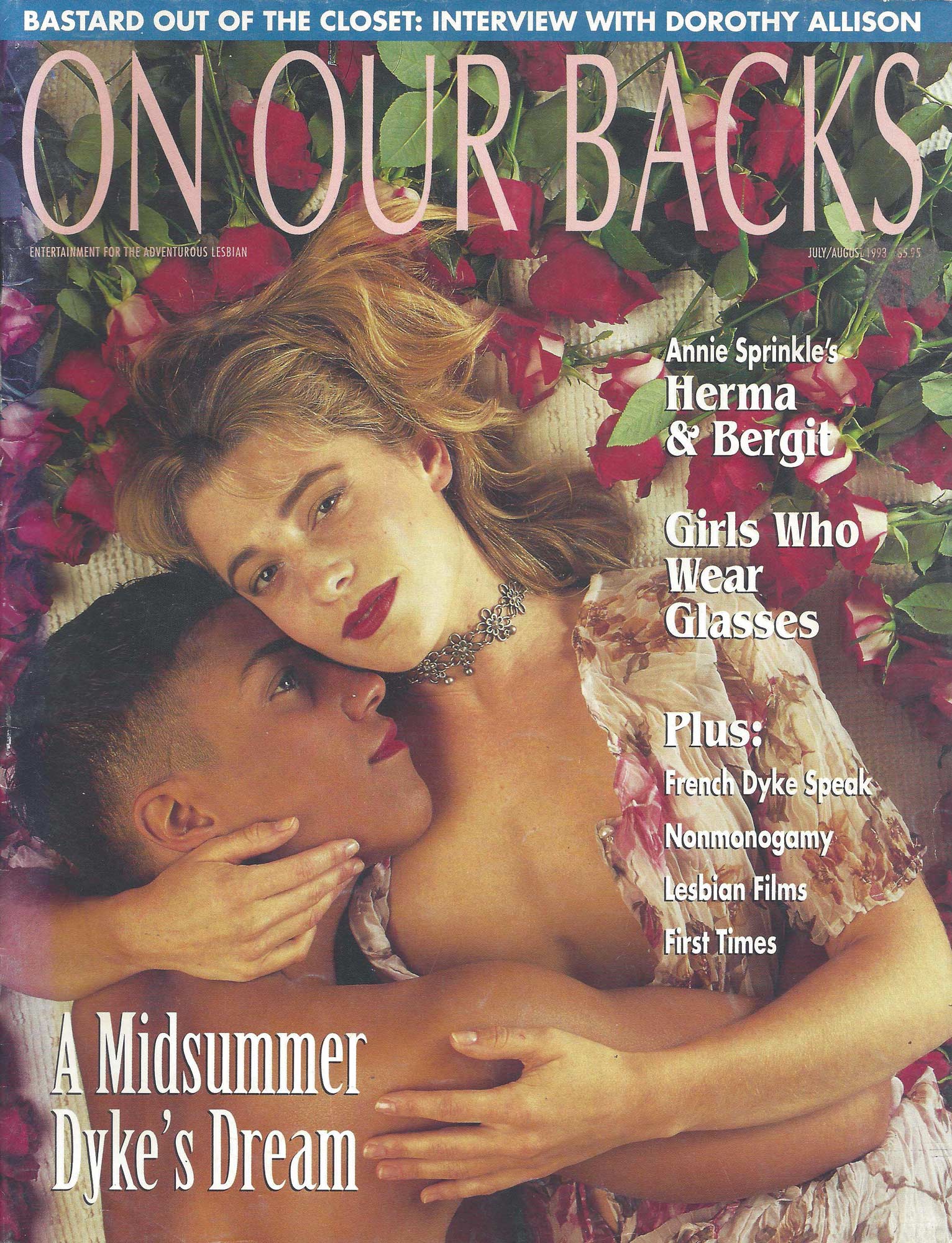Borderline Disorderly 1999

Kiss & Tell, Borderline Disorderly, 1999
Image projection from multimedia performance
Simon Fraser University Library Special Collections and Rare Books, Burnaby
Kiss & Tell’s Borderline Disorderly performance began with Susan Stewart and Lizard Jones sitting across from each other on a darkened stage. They wore head lamps and read from papers on their laps, telling a story of mounting desire in anticipation of reuniting with a long-distance lover: “I’ll turn you over and fuck you from behind. I’ll tell you to scream…. All this will happen.” The piece was replete with references to their previous works. Persimmon Blackbridge read from a review of Drawing the Line, 1988–90, and all three members acted out the process of making the photographs. Images from the project were projected behind the performers, and their monologues were occasionally accompanied by performance artist and musician Glen Watts playing the accordion in drag.

Borderline Disorderly expanded upon discussions of censorship and the feminist sex wars in Kiss & Tell’s 1994 book, Her Tongue on My Theory: Images, Essays and Fantasies. The title of the performance was a pun on the term “borderline personality disorder,” as well as a critique of Canada Customs’ pathologizing of queer sexual practices and materials by labelling them as obscene. Kiss & Tell was questioning who was being judged disorderly. Was it them for making and distributing sexual imagery (including two photographs of Lizard naked and tied up with ropes)? Or customs officials for confiscating these photographs at the border?
Borderline Disorderly addressed three types of censorship: state censorship, censorship within the lesbian community, and self-censorship. In a round-table interview, Susan explained how a key element in their work was combatting self-censorship. “The third one, the really insidious one, we’re conditioned into, and we tried to work with [that] in our performances,” she said. “I used Kiss & Tell’s work to unrepress myself because my conditioning was so severe.”
In one monologue, Lizard imagined trying to get their Drawing the Line photographs back from Canada Customs after they had been seized on their return from the American magazine Libido, where they were published: “He’s holding up one of the bondage photos. ‘Who do you plan to educate with this?’ he says…. ‘Oh, forget it,’ I say. ‘Keep them.’… And then they fight over who gets to take them back to their office…. It still bugs me when I think about customs officials deciding whether it’s obscene or not.” While the fictional conversations between Lizard and the customs agents were quite comedic, they were grounded in real-life trauma. Persimmon talked about why she would not go to the customs offices to retrieve their photographs: “I don’t want go down and talk to a bunch of government guys who’ve already decided that we are perverted lesbian something-or-others.” Susan also refused to go but said: “It is tempting to go for one reason, and that is to challenge their stereotypes about what a pornographer would look like.” Ultimately, their photographs were left to languish. Like many of the queer materials seized by customs, they were likely destroyed.


To draw further attention to the censorship of queer publications and art, Persimmon read from a sexually explicit short story by Ann Wertheim published in the American lesbian magazine On Our Backs. This issue was seized by Canada Customs on its way to Vancouver’s Little Sister’s bookstore. Susan and Lizard re-enacted a scene from the Little Sister’s court case against Canada Customs. Lizard played the role of Jim Deva, one of the co-founders and owners of the bookstore, and Susan portrayed a lawyer who tried to get him to say whether a section from a particular queer book constituted violence against women. Deva refused to pass judgment on a book after being read only three or four lines of it. Including this testimony in the performance was a pointed critique of people who seek to ban books, films, art, and more without having read or seen them in their entirety.
In an overarching way, the vignettes in Borderline Disorderly drew attention to the training (or lack thereof) that customs officers received, the homophobic attitudes they might have harboured, and the absurdity of allowing them decide what is obscene and what should be censored in Canada.

 About the Author
About the Author
 More Online Art Books
More Online Art Books
 Acknowledgements
Acknowledgements